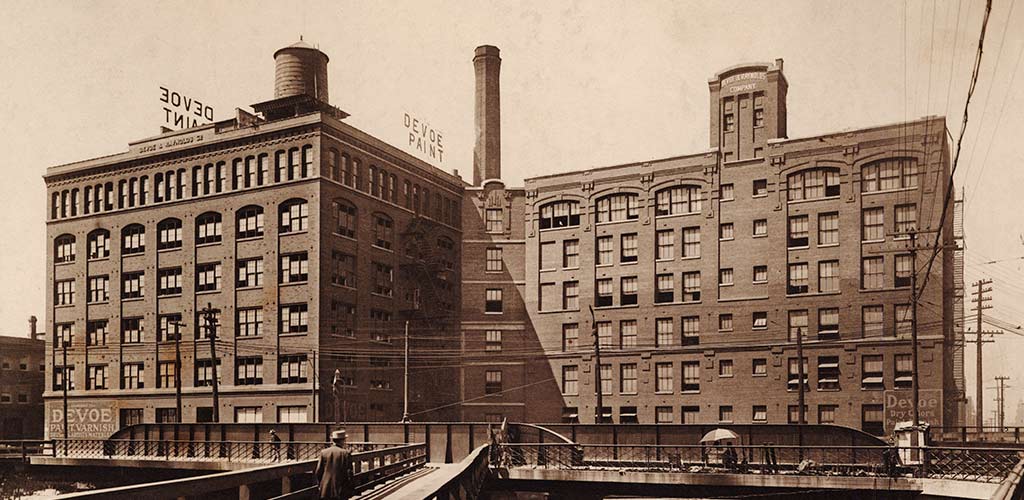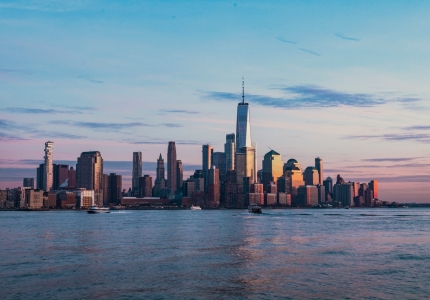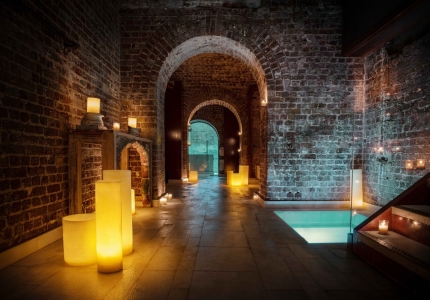Chicago’s architecture has always been considered top notch, and tied in with America’s history of innovation. As the home to famous architects like Frank Lloyd Wright and Jeanne Gang, various Art Deco and Brutalist designs, and a handful of buildings that used to have the title “world’s tallest building,” it’s easy to see why Chicago is classified as an inspirational design hub.
Why is Chicago Known For Its Architecture?
Chicago is the city of skyscrapers. Chicago architects in the 1880s pioneered steel-frame construction as well as the use of large areas of plate glass in the 1890s. Coupled with its rebuilding frenzy after the Great Fire of 1871, and the skyscraper competition it had with New York in the early 20th century, and the city just became a center for architectural design and experimentation. After the construction boom, new schools of design and architecture were founded, which attracted individuals and creatives from around the world, like those from the Bauhaus movement that started in Germany. A love of design plus public funding projects as well as the upper class flexing their own wealth has led to Chicago being a playground of sorts when it comes to buildings, offices, and other structures.
Current Chicago Architecture Trends
While many of Chicago’s iconic buildings are getting facelifts and renovations, the rest of the city is still expanding or repurposing older areas. Aside from modern or futuristic designs, Chicago architecture is also incorporating the following trends as it builds up its city: Inclusive architecture which includes or creates spaces that are easier to navigate for mobility-impaired, visual-impaired, the elderly and others Sustainability, which would include functions like rainwater collection systems or different materials to reduce carbon footprints
Iconic Chicago Buildings
No article about Chicago architecture would be complete without a list of some of the city’s famous, iconic structures. We’ve gathered a list of five of our favorites that really showcase Chicago architecture:
The Willis Tower
The Willis Tower, known to locals as The Sears Tower was the world’s tallest building from its completion in 1974 until 2014. It lost that title to the new One World Trade Center in New York, but it’s still the tallest building in Chicago. Originally built as a new office location for Sears Roebuck, the Willis Tower’s design innovation comes from its nine square “tubes” that were actually separate buildings clustered together in a matrix to form the base of the tower. This design has been used in most tall buildings since.
The Rookery Building
The Rookery’s claim to fame is that it is one of the oldest, original Chicago high-rise buildings still standing today. It was designed by the architecture firm Burnham & Root in the 1880s and its interior lobby was renovated by Frank Lloyd Wright in 1905. The office building is essentially shaped like a cube, but it features gorgeous wrought staircases, a Romanesque entrance arch, and an architect’s library.
The Tribune Tower
This Neo-Gothic beauty was the winning design for the Chicago Tribune’s design contest for its new headquarters in 1922, and it’s easy to see why. Drawing inspiration from French Gothic architecture the tower features stone carving decorations and gargoyles on top near its buttresses, courtesy of artist Rene Paul Chambellan. The building also features rocks or stones from other famous monuments and structures from around the world, including Wawel Castle, The Alamo and the Taj Majal. The Tribune Tower was granted landmark status in 1989.
Marina City
Completed in 1968 and designed by Bertrand Goldberg, the corn cob shaped building was one of the first city-within-a-city developments in the U.S. and features apartments, parking garages, a grocery store, a bowling alley and a concert hall within its structure. Marina City is one of the few brutalist buildings to remain in the city.
AIRE Chicago
The outside may be plain brick, but the inside of this restored factory from 1902 is magical. AIRE Ancient Baths Chicago has preserved as much of the original structure as possible, mainly the exposed brick, industrial columns, and wooden beams that make up the factory, and added decorative touches and accessories that call back to Greek, Roman, and Ottoman times and aesthetic. It’s like stepping back in time as you enjoy the thermal baths. If you ́ve enjoyed this post, we recommend you to read our article about best places to visit in Chicago.




